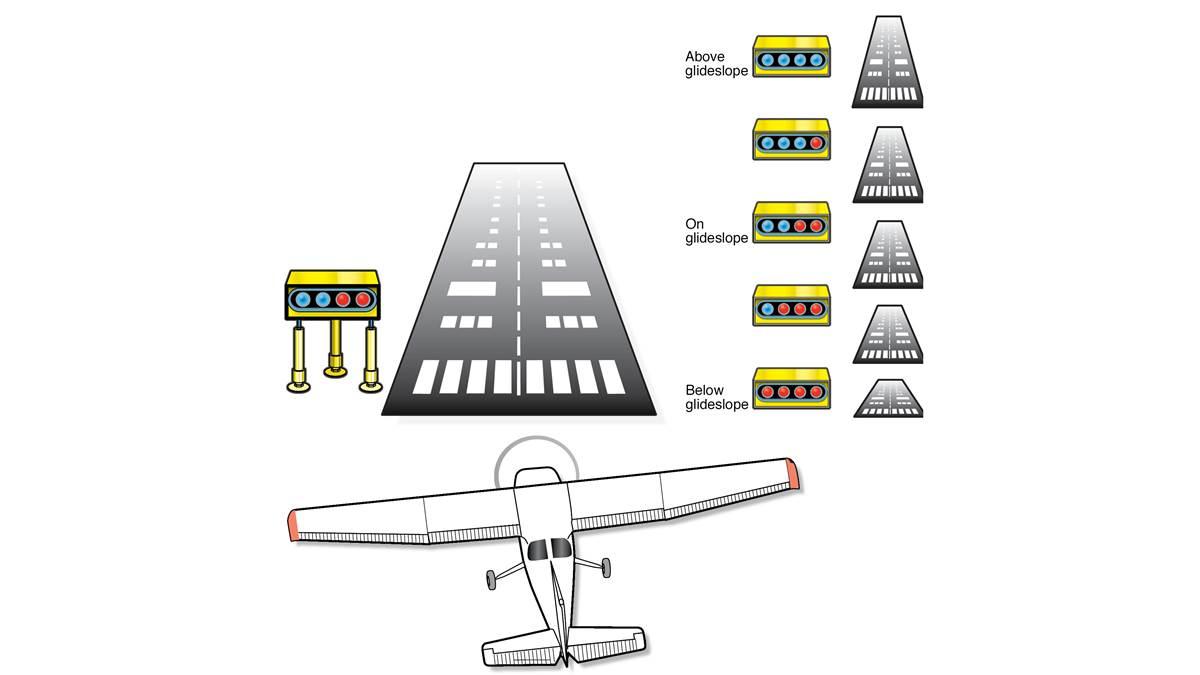
Thank the Brits again. Two researchers in England conceived of the precision approach path indicator (PAPI) system in 1974, and this landing guidance system is now in place at airports across the world. Typically, PAPI lights are housed horizontally in a box that sits on the left side of the approach runway (at international airports, PAPI lights are situated on both sides of the approach runway). The array of lights is stationary, usually two or four light units on a single row, and the lower half of the light is behind a red filter and the top half a white filter. Their positions are calibrated to a 3-degree glideslope to the runway. The lights themselves do not change; the color changes from the pilot’s perspective based on the angle the pilot sees them. Lights can be seen 3 miles away in daylight, 20 miles away at night. PAPI lights are activated by ATC (or the pilot at some smaller airfields) and were adopted by NASA for landing the space shuttle.



